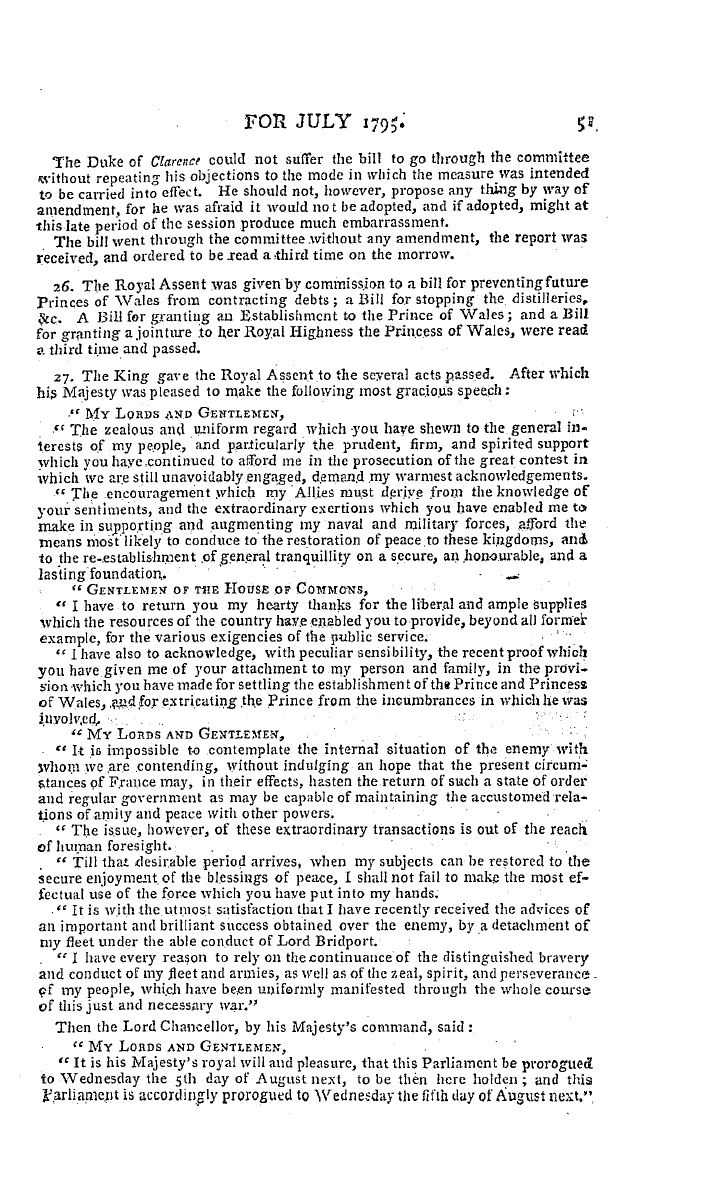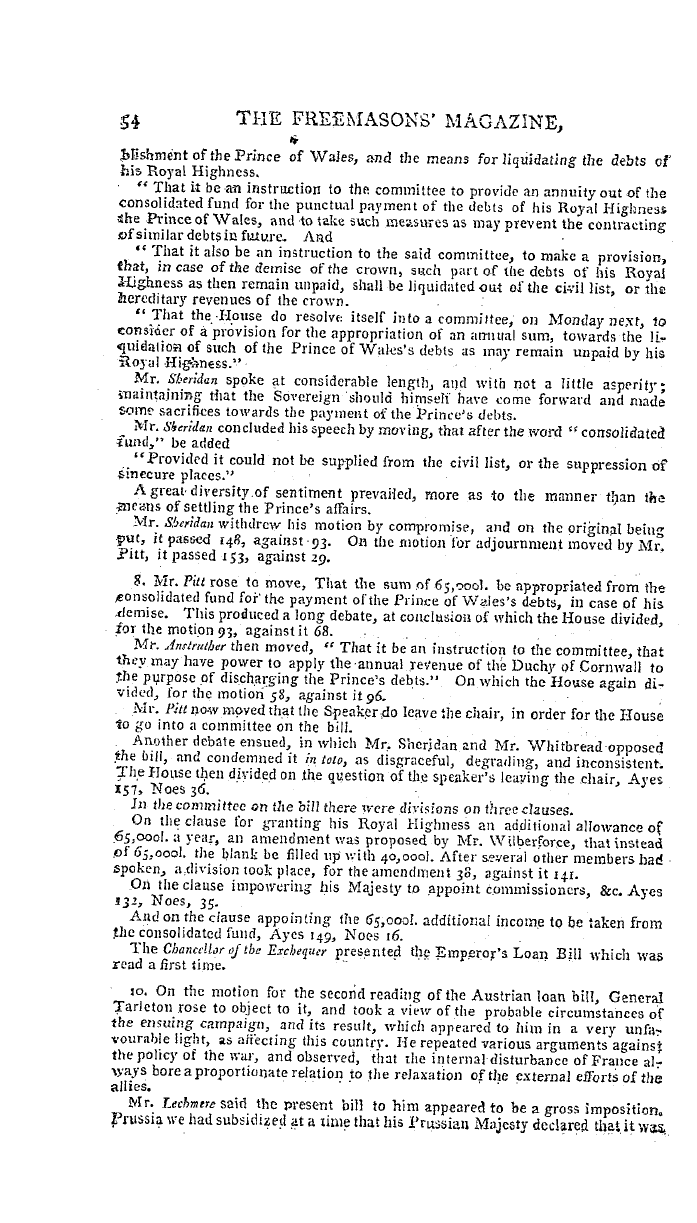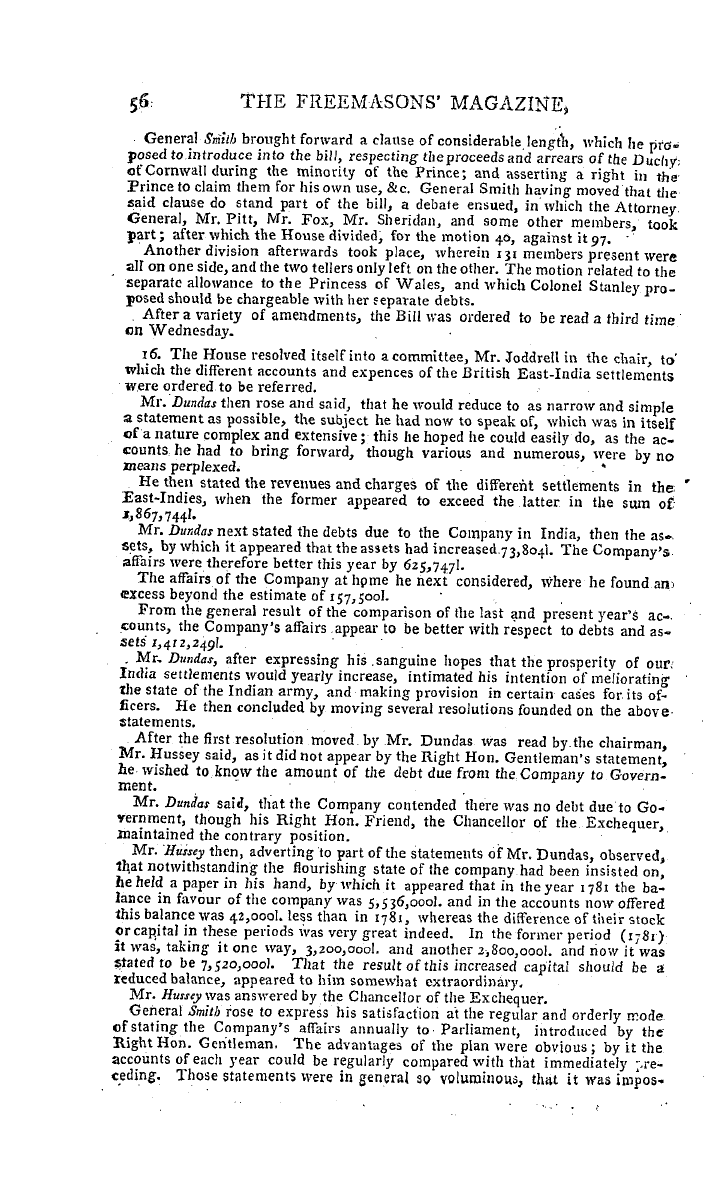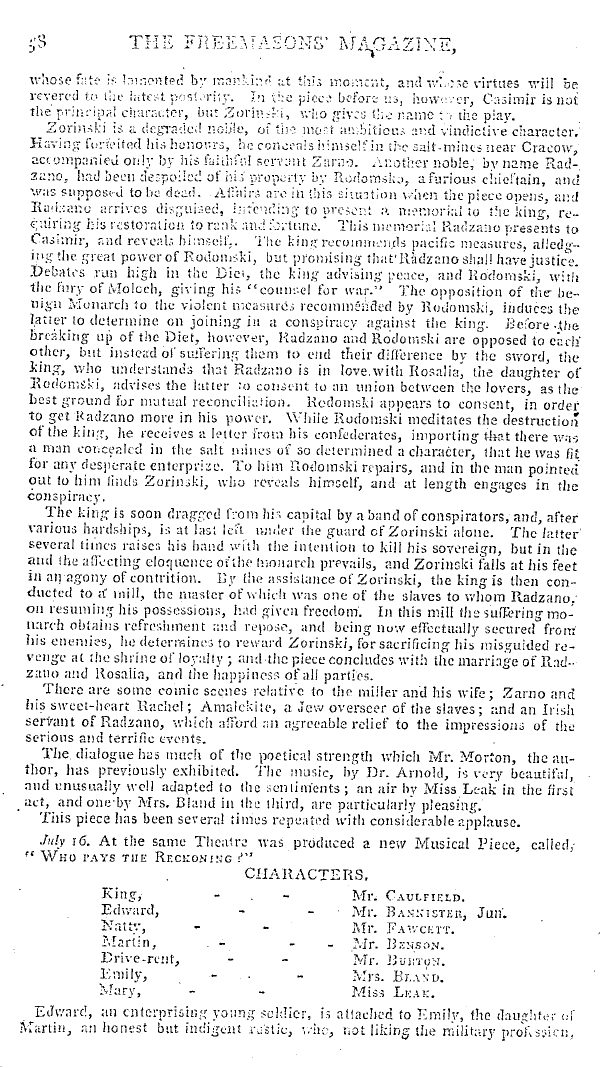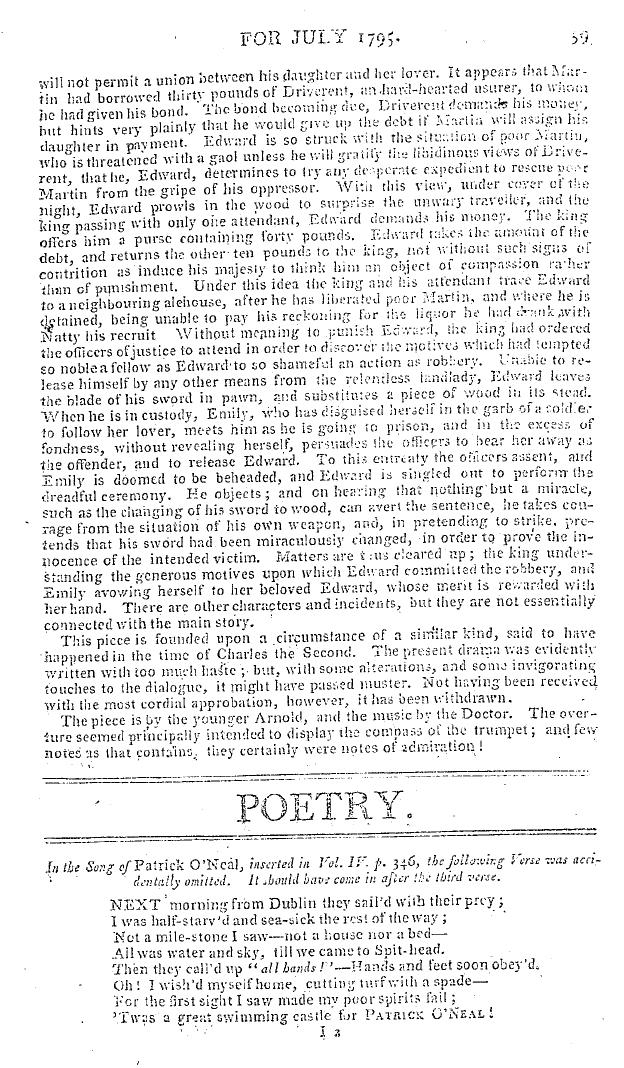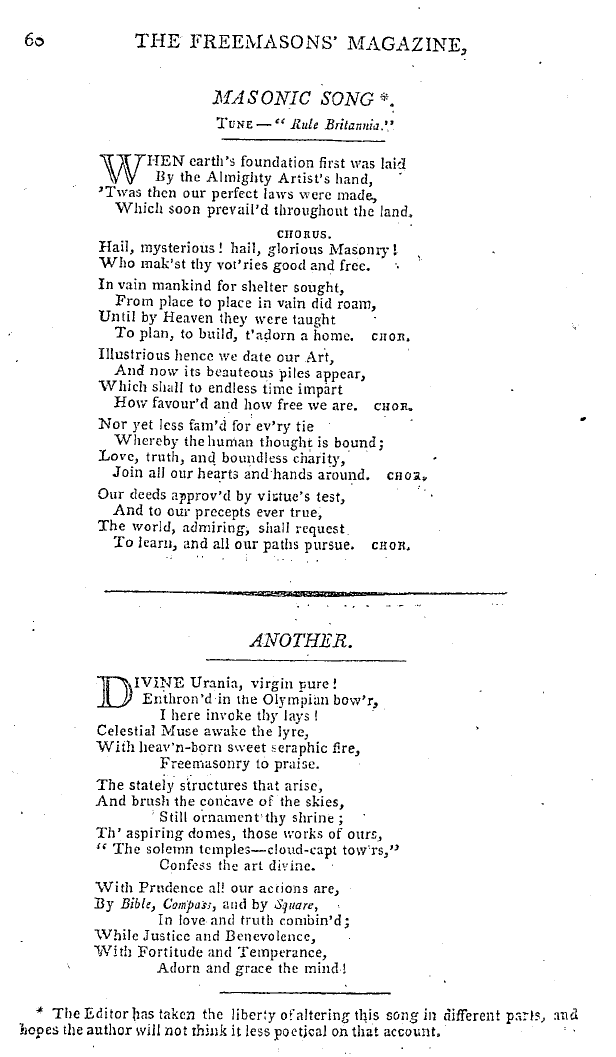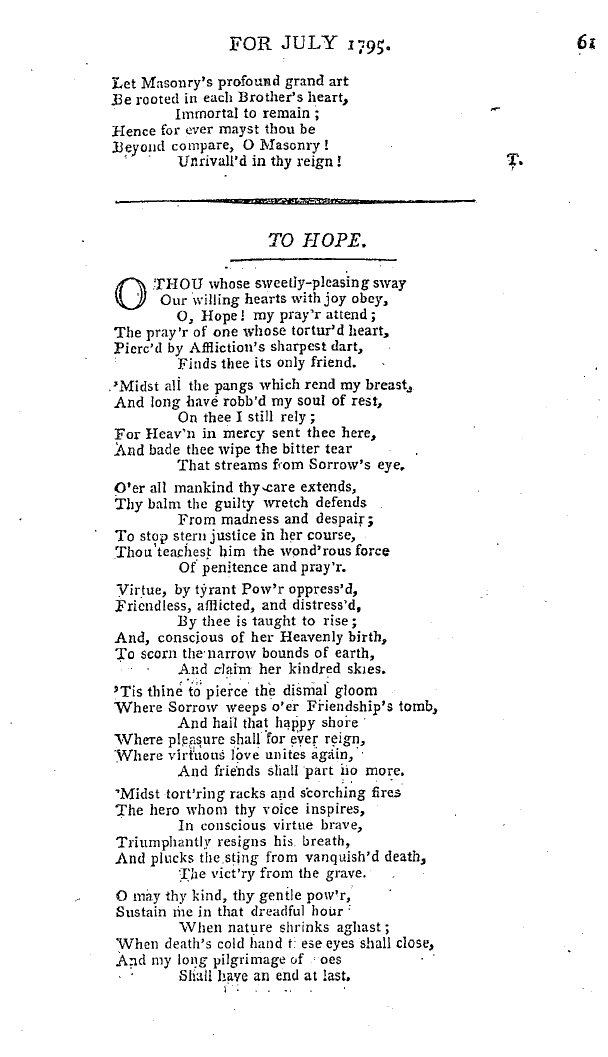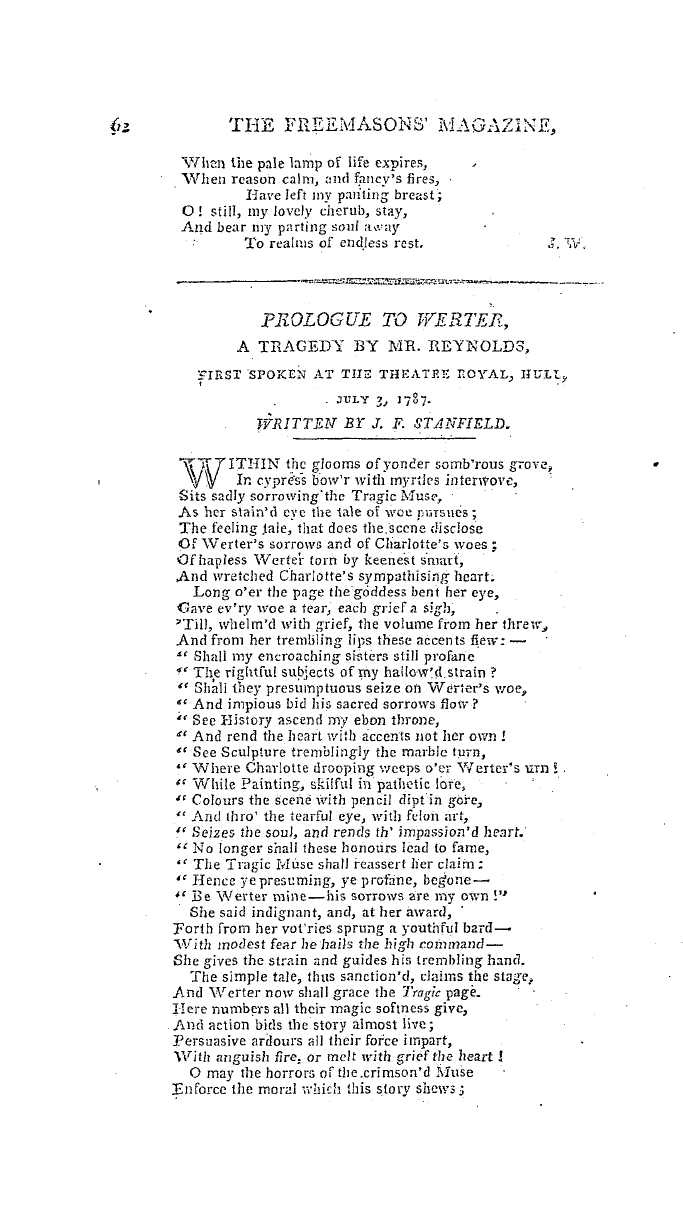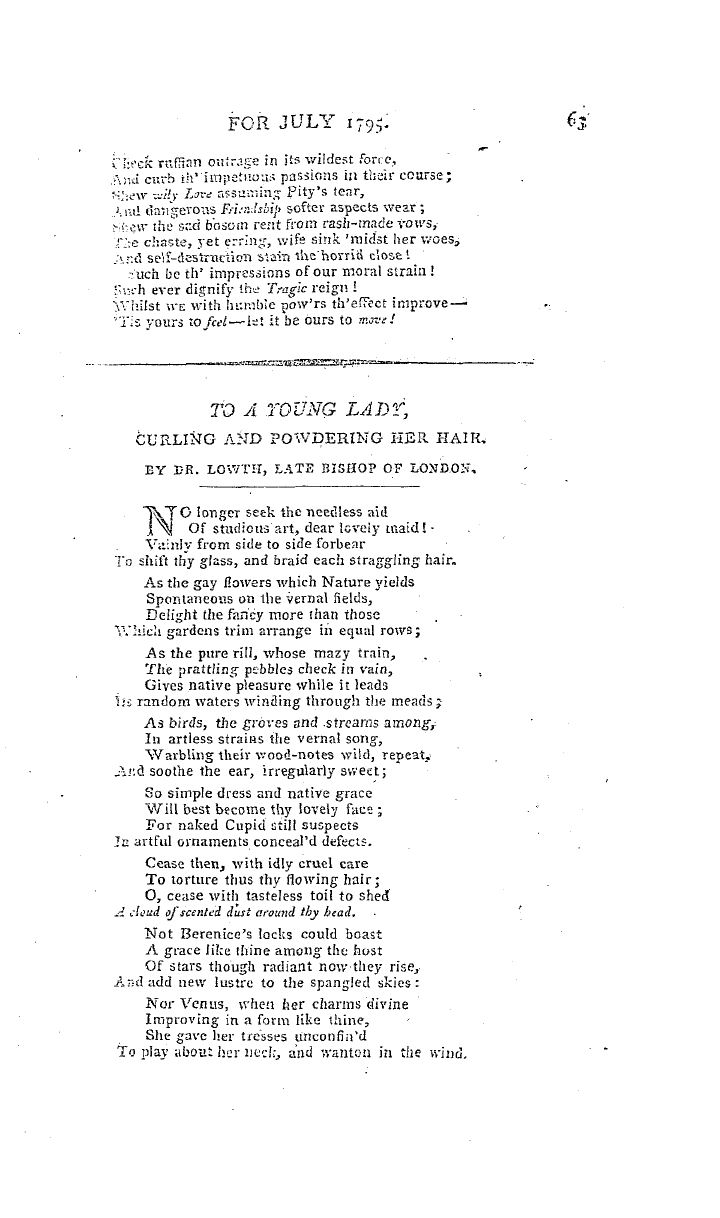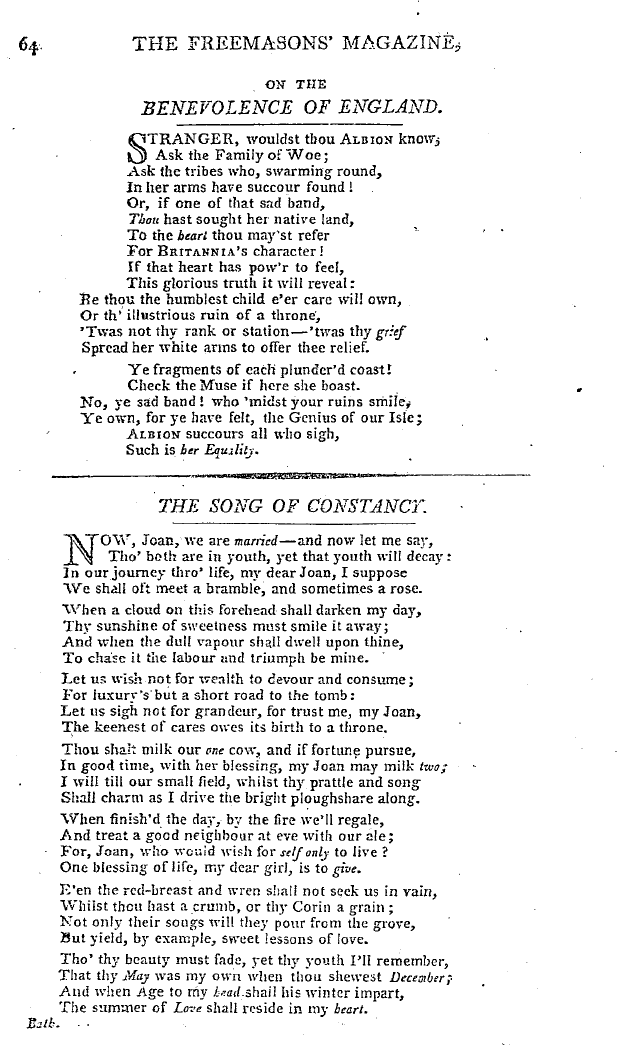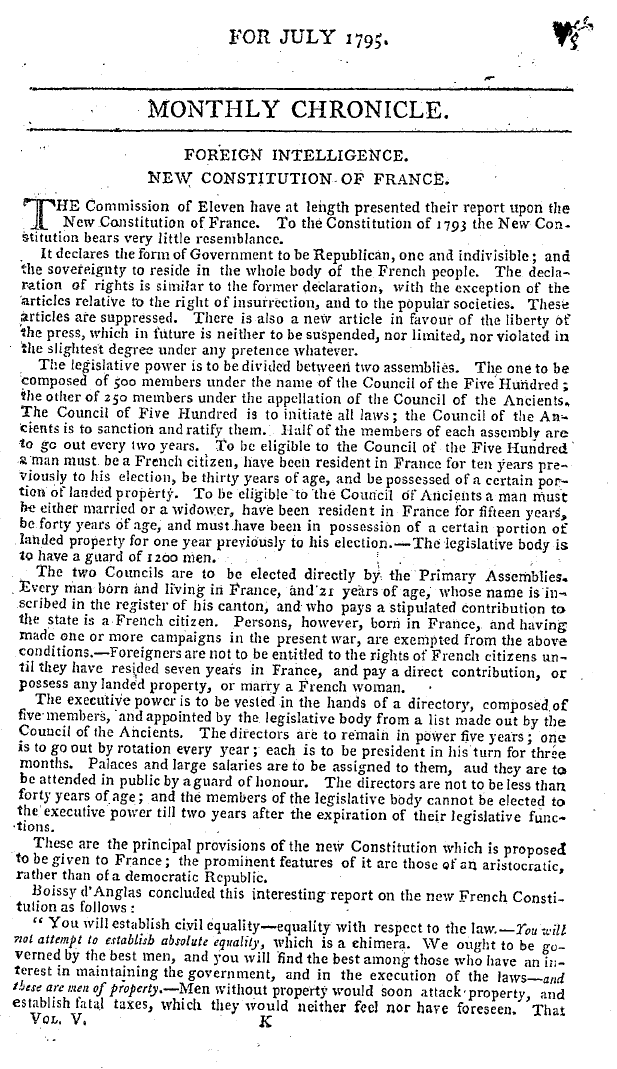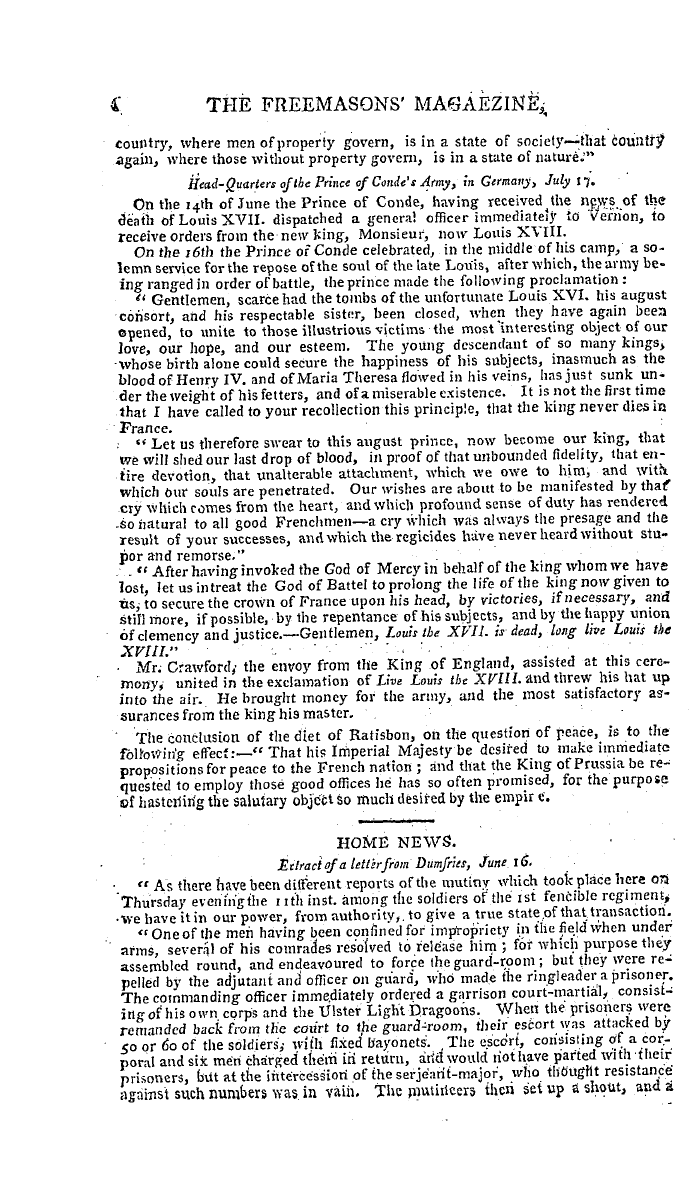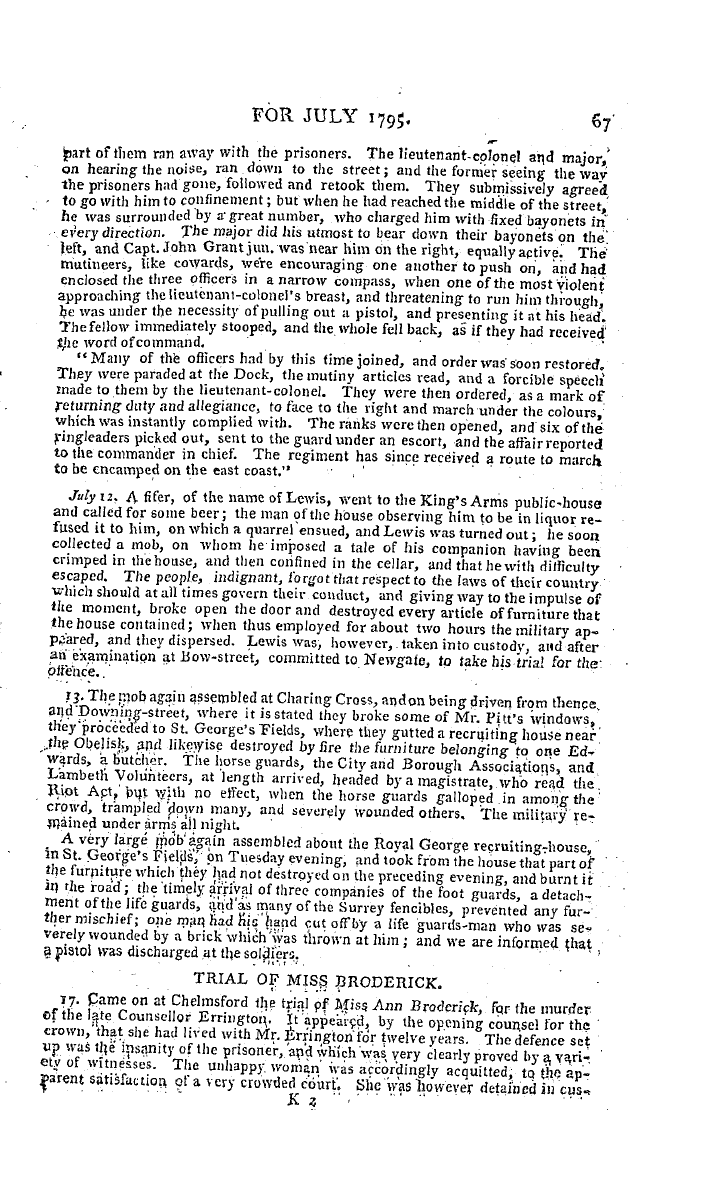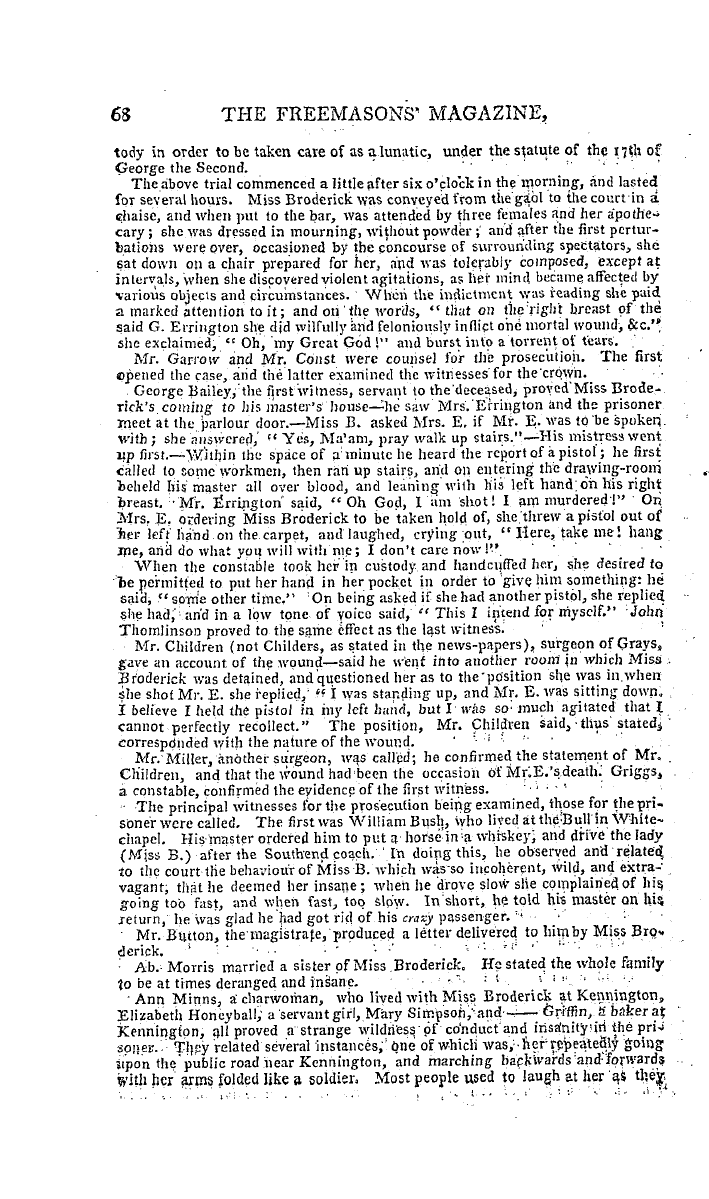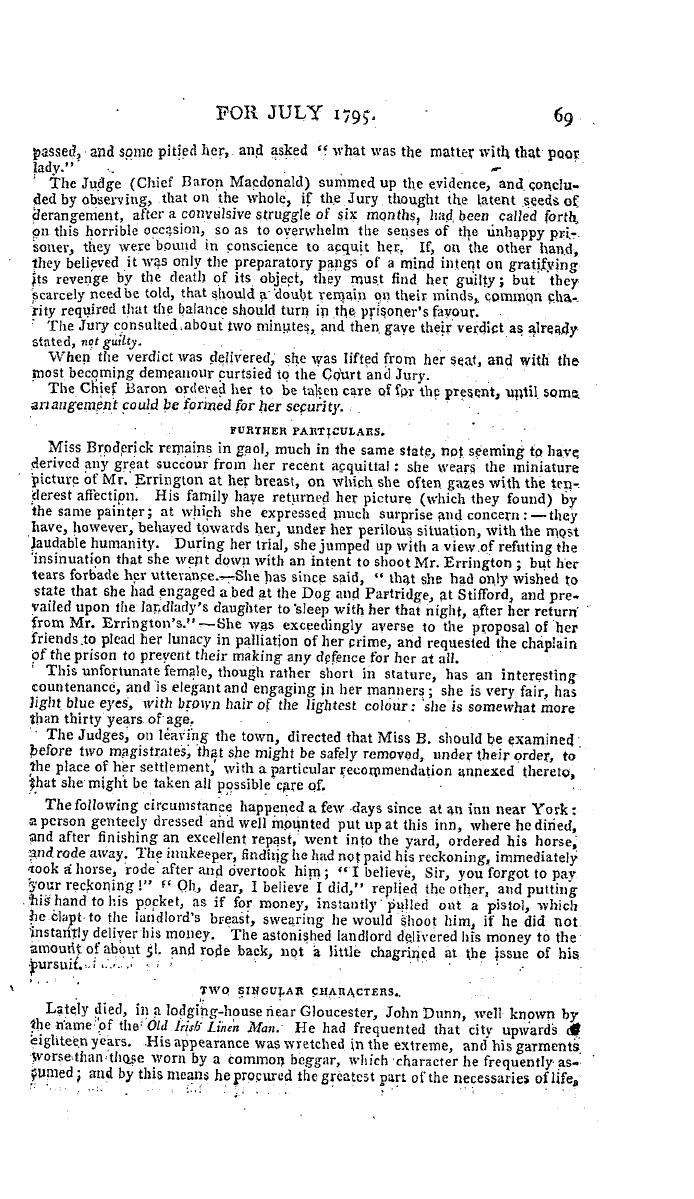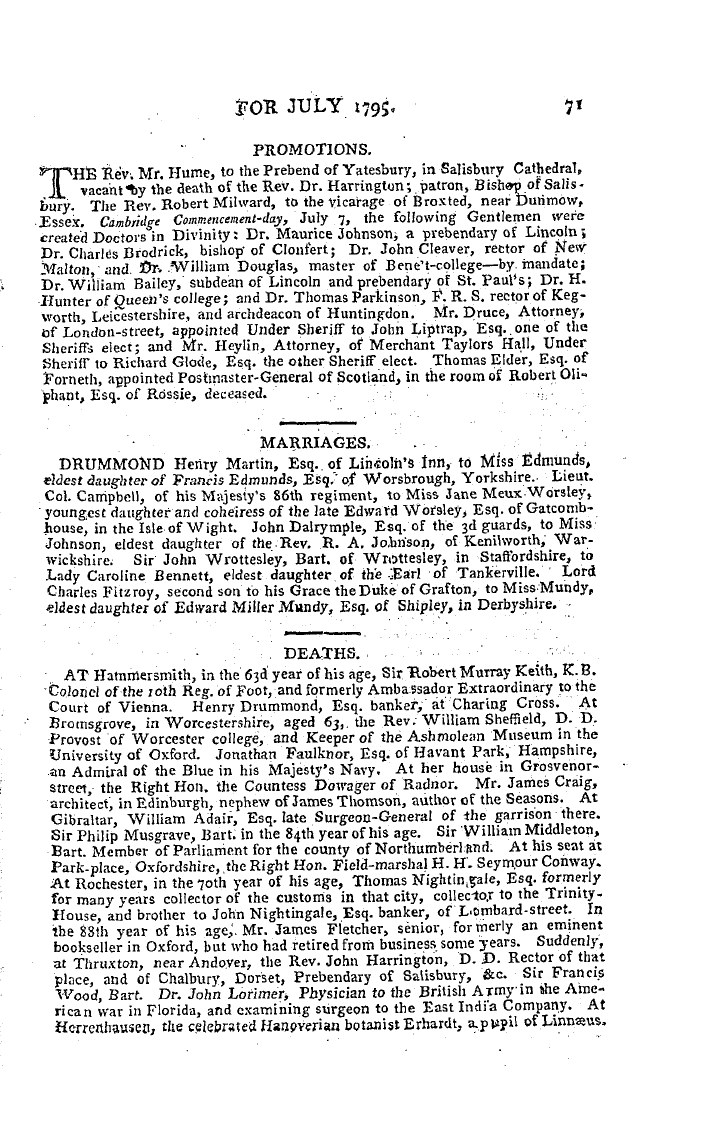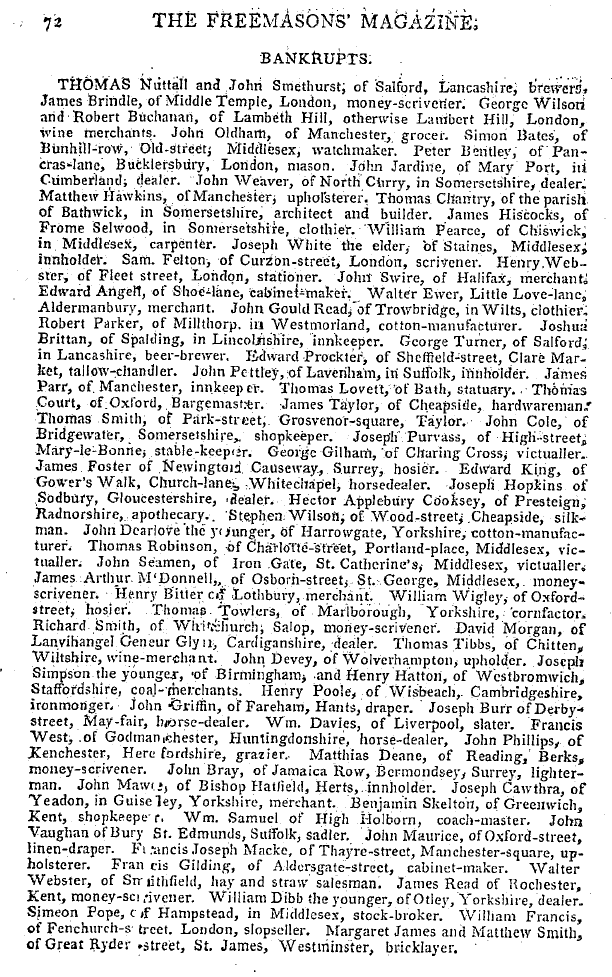-
Articles/Ads
Article DISSERTATIONS ON THE POLITE ARTS. No. II. ← Page 3 of 5 →
Note: This text has been automatically extracted via Optical Character Recognition (OCR) software.
Dissertations On The Polite Arts. No. Ii.
from the brain . History gives examples , such as they are , often imperfect . The poet g ives them such as they ought to be . And it is fur this reason , according to the same philosopher , that poetry is a much more instructive lesson than history . Aio vsa ( fuxoerotpo-rsfoy , xo » cT .-BXa ' ivrsfov ffoir ' o-i ; irrofia ; ss-liv , Poet . cap . 9 . Uoon this princile we must concludethat if arts are imitations
p , of nature , they ought to be bright and lively imitations , that do not copy her servilely , but having chosen objects , represents them . with all the perfections they are capable of ; always taking care , that in such compositions the parts have a proper relation to one another ; otherwise the whole may be absurd , while every single part taken separately remains beautiful : in a word , imitations where nature is
seen , not such as she really is , but such as she may be , and such as may be conceived in the mind . What did Zeuxis when about to paint a perfect beauty ? Did he draw the picture of any particular fine woman ? No ; he collected the separate features of several beauties who were at that time living . Then he formed in his mind an idea that resulted from all these features united ; and this idea was the prototype or model of his picture , which was probable and poetical in the whole , and was true and
historical only in the parts taken separately . And this is what every painter does , when he represents the persons he paints with more beauty and grace than they really . have . This is an example given to all- ' artists : this is the road they ought to take , and it is the practice of every great master without exception . When Moliere wanted to paint a man-hater , he did not search for . an oriinalof which his character should be an exact copy ; had he
g , 50 done he had made but a picture , a history ; he had then instructed but by halves : but he collected every mark , every stroke of a gloomy temper , that he could observe amongst men . To this he added all that the strength of his own genius could furnish him , of the same kind ; and from all these hints , well connected , and well laid out , he drew a single character , which was not the representation of the true ,
but of the probable . His comedy was not the history of Alcestes , ' but his picture of Alcestes was the history of man-hatred taken in general . And hence lie has g iven much better instruction than a scrupulous historian could possibly have done by only relating some strictly true strokes of a real misanthrope . It was a saying among the ancients , that Such a thing is beautiful as a statue .. And it is in the same sense that Juvenal , to express ail the possible horrors of a tempest , calls it a poetical tempest .
Omnia Jiunt Talia , tr . m graviter , si quando Poe ' tica surgit Tempestas . SAT . 12 . ' These examples are sufficient to give a clear and distinct idea of what we'call beautiful nature . It is not the truth that does exist , but that truth which may exist , beautiful truth ; which is represented as if it really existed , and with all the perfections it can receive .
Note: This text has been automatically extracted via Optical Character Recognition (OCR) software.
Dissertations On The Polite Arts. No. Ii.
from the brain . History gives examples , such as they are , often imperfect . The poet g ives them such as they ought to be . And it is fur this reason , according to the same philosopher , that poetry is a much more instructive lesson than history . Aio vsa ( fuxoerotpo-rsfoy , xo » cT .-BXa ' ivrsfov ffoir ' o-i ; irrofia ; ss-liv , Poet . cap . 9 . Uoon this princile we must concludethat if arts are imitations
p , of nature , they ought to be bright and lively imitations , that do not copy her servilely , but having chosen objects , represents them . with all the perfections they are capable of ; always taking care , that in such compositions the parts have a proper relation to one another ; otherwise the whole may be absurd , while every single part taken separately remains beautiful : in a word , imitations where nature is
seen , not such as she really is , but such as she may be , and such as may be conceived in the mind . What did Zeuxis when about to paint a perfect beauty ? Did he draw the picture of any particular fine woman ? No ; he collected the separate features of several beauties who were at that time living . Then he formed in his mind an idea that resulted from all these features united ; and this idea was the prototype or model of his picture , which was probable and poetical in the whole , and was true and
historical only in the parts taken separately . And this is what every painter does , when he represents the persons he paints with more beauty and grace than they really . have . This is an example given to all- ' artists : this is the road they ought to take , and it is the practice of every great master without exception . When Moliere wanted to paint a man-hater , he did not search for . an oriinalof which his character should be an exact copy ; had he
g , 50 done he had made but a picture , a history ; he had then instructed but by halves : but he collected every mark , every stroke of a gloomy temper , that he could observe amongst men . To this he added all that the strength of his own genius could furnish him , of the same kind ; and from all these hints , well connected , and well laid out , he drew a single character , which was not the representation of the true ,
but of the probable . His comedy was not the history of Alcestes , ' but his picture of Alcestes was the history of man-hatred taken in general . And hence lie has g iven much better instruction than a scrupulous historian could possibly have done by only relating some strictly true strokes of a real misanthrope . It was a saying among the ancients , that Such a thing is beautiful as a statue .. And it is in the same sense that Juvenal , to express ail the possible horrors of a tempest , calls it a poetical tempest .
Omnia Jiunt Talia , tr . m graviter , si quando Poe ' tica surgit Tempestas . SAT . 12 . ' These examples are sufficient to give a clear and distinct idea of what we'call beautiful nature . It is not the truth that does exist , but that truth which may exist , beautiful truth ; which is represented as if it really existed , and with all the perfections it can receive .




























































